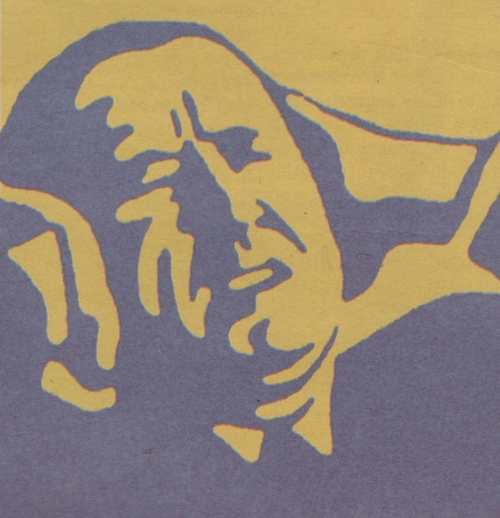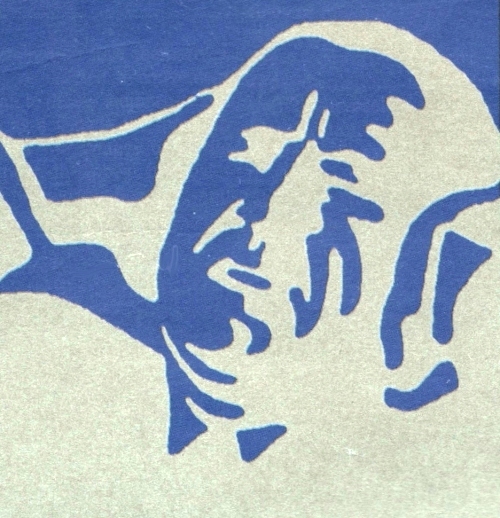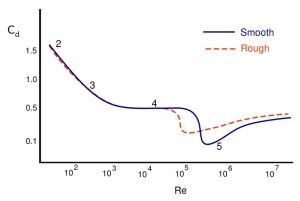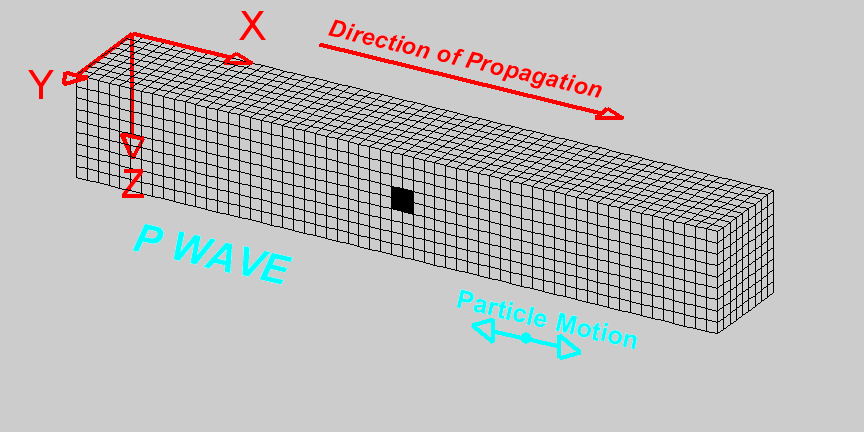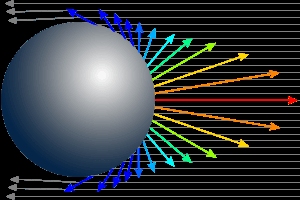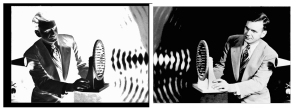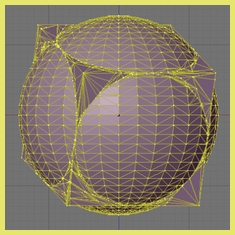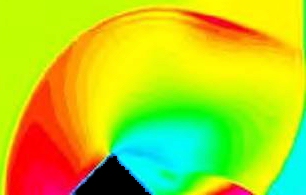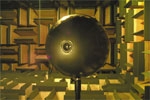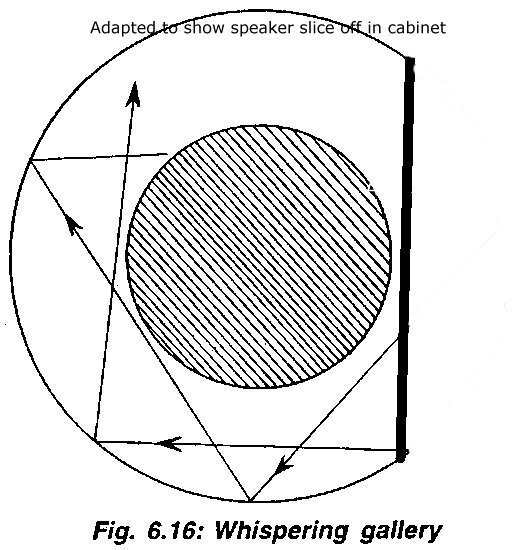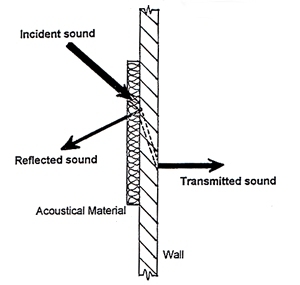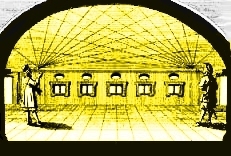|
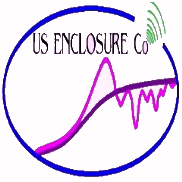 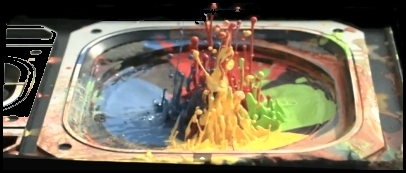 
A Gentleman's Guide For Improving Loudspeakers
Below: Exterior
Diffraction Charts Caused By Loudspeaker
Enclosures including the original Dr.
Olsen charts from the late 1930's -
early 1940's
|
These
are complete original Dr. Olsen graphs and
drawings of cabinet shape responses
The scans are of poor quality but the
information is very observable.
This is
the Entire Set of his observations
produced in the late 1930's and early
1940's.
|
The
Results, from Dr. Olsen in the late
1930's, show that any loudspeaker
driver or driver array will benefit from a
curved loudspeaker enclosure.
This benefit will gain increased sound quality and sales in
the marketplace.
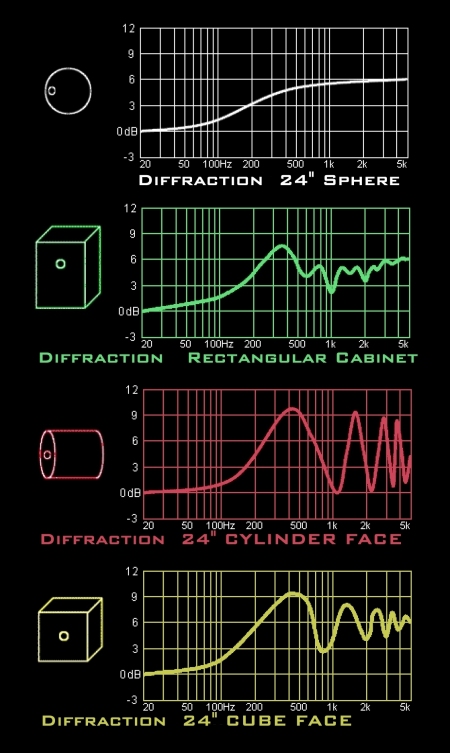
|
|
Boundary Layer Drag Coefficient, per shape, using the same surface area and material
as obtained from laboratory experiments conducted by NACA and NASA.
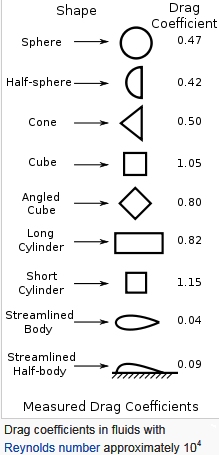
- 2: attached flow (Stokes Flow) and steady separated flow,
- 3: separated unsteady flow, having a laminar boundary layer upstream of the separation, and producing a vortex street,
- 4:
separated unsteady flow with a laminar boundary layer at upstream side,
before flow separation, with downstream of the sphere a chaotic
turbulent wake,
- 5: post-critical separated flow, with a turbulent boundary layer
|

|
Dr. Harry Olsen 1950 experiments at RCA research labs in Princeton University
Shape A- Sphere
|
Shape B- Sphere, squished |
Shape C- Cylinder,
center-mount |
These graphs are from
experiments performed in 1950 at
RCA's research labs at Princeton
University. The driver used a
sealed-back cabinet using the shapes
as drawn by Dr. Olsen. What this
means is that the responses you see
here are caused ONLY by the
Outer Shape of the
Cabinet or Enclosure!
|

|
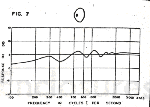
|

|
Notice how Shape C, the Cylinder,
generates a strong "ringing" or
resonance pattern. Shape A
(Sphere) has by far the least
distortion of all shapes on Olsen's
charts. Nothing approaches the
Sphere's lack of cabinet distortion.
Properly curved cabinet designs
approach the Sphere. |
| ~~~~~~~~~~~~~~~~ |
~~~~~~~~~~~~~~~~ |
~~~~~~~~~~~~~~~~ |
|
| Shape D- Cylinder, side-mount |
Shape E- Cube, center-mount
|
Shape F- Cone, center-mount |
|

|

|

|
One would suspect these distortion
patterns would appear, just from interior
shape reflections back
through the drivers cones-- given the
cylindrical nature of ports, but it is
interesting to see that the exterior
effect apply as well as the data
shows. Also review Shape E's
responses, the Cube - same
high-resonance pattern. Not a
desirable cabinet to reduce cabinet
distortion! |
| ~~~~~~~~~~~~~~~~ |
~~~~~~~~~~~~~~~~ |
~~~~~~~~~~~~~~~~ |
| Shape G- Dual cone |
Shape H- Pyramid |
Shape I- Dual Pyramid |

|
 |

|
Here are more shapes with bad
cabinet distortion- exterior effects
are clearly in evidence based on Dr.
Olsen's clean test methodology! |
| ~~~~~~~~~~~~~~~~ |
~~~~~~~~~~~~~~~~ |
~~~~~~~~~~~~~~~~ |
| Shape J- Tweaked cube |
Shape K- Rectangular |
Shape L- Tweaked rectangular |

|
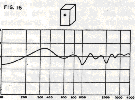
|

|
Here are what most designers settle
for, at best twiddling in the front
baffle and driver placement. Helps a
little but you can still see the bumps
and dips compared to curved cabinets.
Even computerized processing cannot
approach the natural strong, smooth,
response that our spherical, ovoid, or
wing-shaped enclosures easily provide
with a great never before seen
loudspeaker look similar to a lamp, a
piece of curved art, anything
curved found in your home.
.
|

|
Here is another form of
exterior diffraction, the results
graphed by Dr Olsen in the 1930's of
sound bouncing off an object.
In this first case the shape is a
Cylinder.
As suspected, the Cylinder shows
the same strong resonance patterns
shown above.
|
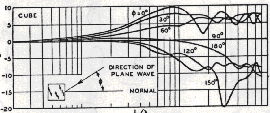
|
The acoustic reflections
of a Cube. Bad as the cylinder,
and naturally worse at some angles. |
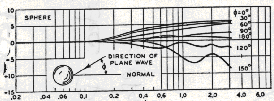
|
And here we have the
sphere. Notice how it actually has a
smoothing effect, in fact spheres have
been hung in the Hollywood Bowl (see
below) as acoustic correction devices.
Talk about room treatment! |
These
graphs do not describe the further benefits
of internal diffraction reduction caused by
focusing the internal sound waves into the
center of the enclosure and also into the
rings of Sound Diffraction found along the
interior surface of the enclosure.
Both effects cause far less time-delayed
sound-bleed through the speaker cones--
which destroys sound-quality in the
listening area outside the loudspeaker
system. Using sound-absorbents can
reduce reflections by 20db maximum.
Proper curved internal wall design can
reduce the internal reflections by close to
100%. These effects are not on these
charts.
Compensation
via electronics or Loudspeaker driver
placement/aiming can only create a rough
equivalent of the benefit of using curved
loudspeaker enclosure shapes because the
sound-spectrum bandwidth is far too wide for
quality non-enclosure compensation.
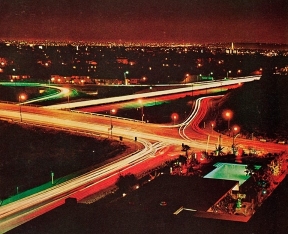
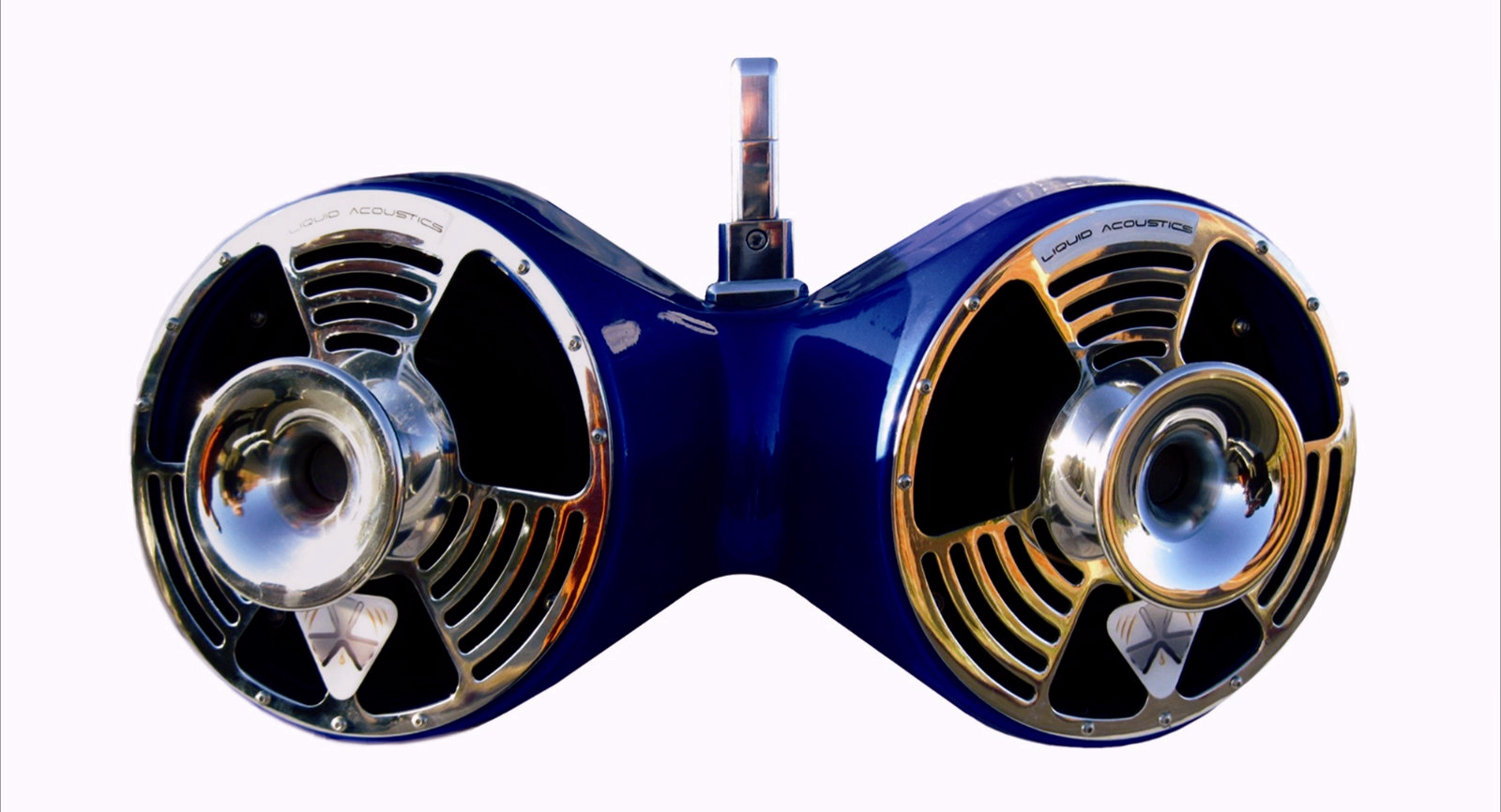
|
Curving The Loudspeaker Enclosure Design Eliminates
a
large number of variables when
designing mass-manufactured
loudspeakers including the calculus
involved with baffle-step diffraction.
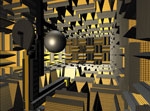
|
Our
ultimate enclosure shape-materials have
the ability to eliminate baffle-step
diffraction and thus literally lessen
the work and cost involved with
designing a proper loudspeaker system;
it allows previous engineering efforts
to be easily modified to create both
Stellar - Sounding and Looking
products- at a far lower
percentage of your current Engineering,
Manufacturing and Driver costs.
|
Sound
Diffraction at Rear-Corner of
box- shaped speaker
|
Curving your OEM enclosures also allows
you to differentiate your products from
the competition while offering a Class-A
finish, at a manufacturing cost lower
than any wood, metal or plastic curved
loudspeaker enclosure on the market,
produced in any country. And
properly-designed curved loudspeaker
enclosures are Wife-Friendly as the home
is filled with curved objects
Port Soundwave Vortex
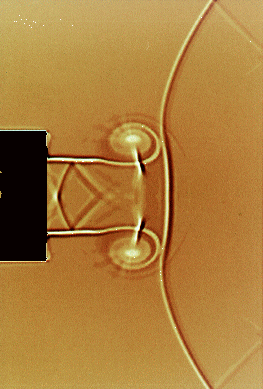
creates
Standing Waves
Our SHAPES reduce
exterior diffraction and also reduce the
additional smeared sound-quality even
the highest costing loudspeakers have
which are caused by internal reflections
which travel through the loudspeaker
cone... up to dozens of
milliseconds after the sound was
originally reproduced by the drivers...
both distorting the cone motion and also
propagating unwanted reflective sound
even with near field monitors. No
electronics can hide the internal
effects nor can any stuffing reduce
internal sound even 30 db let alone the
140 db found inside loudspeaker
enclosures. Our shapes and our materials
together are literally The most
technologically advanced Loudspeaker
Enclosures available. They simply
improve loudspeaker sound quality in a
way no electronics can at a cost lower
than your existing loudspeaker enclosure
costs and with higher visual
quality. Our product materials
create a true breakthrough in
loudspeaker technology.
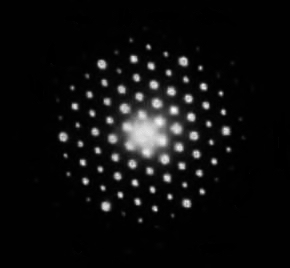
Defeatable Internal
Diffraction in a curved
loudspeaker cabinet.
|
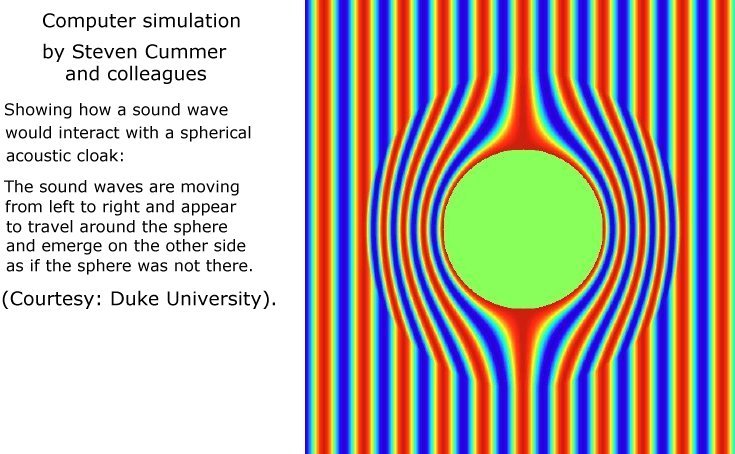
US Enclosure’s
Technology
can add tremendous value to a given OEM
loudspeaker system. This is
accomplished by Smoothing and
Widening the response.
|
Loudspeaker
Definition
is Enhanced...
SMOOTHING--
Lower exterior wall
diffraction smooths and
sweetens the
response. Even the
best existing electronics can
only crudely simulate this
effect. Less diffraction
from exterior walls also
lowers the delays created from
sharp enclosure corners.
Our loudspeaker enclosure
shapes also create far less
diffraction from the
enclosure's interior walls.
The benefit is far less
sound-pressure induced
loudspeaker cone bleed-through
of time delayed time-delayed
sound from the loudspeaker
into the listening
area.
WIDENING--
Lower exterior
cabinet surface diffraction
from the causes
soundstage widening.
Diffraction. All
waves diffract no matter
their frequency. As an
example, review diffraction
using light waves.
When a yellow light wave
diffracts, it slows and turns orange. The
exact same thing occurs when
a sound wave slows after
encountering a loudspeaker
box corner... corners found
either on the inside of the
box or on the outside of the
box-shape loudspeaker
enclosure. The sound
changes from
it's original
quality.
Currently with standard
box-shapes, both internal and
external diffraction occur, both
negatively effecting
And this is
unacceptable now that curved
loudspeaker enclosures can
be manufactured that
look as good or better than
existing box-shaped
loudspeaker enclosures and
with the same manufacturing
costs than box-shaped
loudspeaker enclosures.
The mix of "yellow" & "orange"
sound causes loudspeaker
enclosures to negatively "color" it's
sound.
OUR BENEFIT: Your drivers
will sound more expensive
when this coloration is (
in practical-terms )
"eliminated" from the
product's sound
field. And we
can provide
these benefits to
your company at the same
or
lower
cost
than you currently are
paying for box-shaped
cabinets. Our Design
Division has a long-term
proven success record when
your design engineers
request additional
assistance.
Manufacturers
using either electronic or
other diffraction-compensation
systems still have the reality
that their compensation
system has to properly handle
a 20 - 60 hz to 8 - 10 khz wide
bandwidth in real-time and the
compensated sound then still
travels past both external and
INTERNAL corners-- causing
time-delayed bleed through the
driver cones from internal
diffraction & phase-shifts
from exterior cabinet corners
as external diffraction.
|
|
Theile Small driver database
Lynn Olson: Loudspeaker Cabinet Design
Lynn Olson: A Tiny History of High Fidelity
Lynn Olson: THD over the Years
Sound Systems: Mono vs Stereo and More from MC2
Loudspeaker Array Case Study-- Theory Meets Reality from MC2
Reflections on Reflections (From Pro Sound Web)
Anechoic Chamber practices & Loudspeaker Cabinet Stuffing applications:
Publication 1 Publication 2 Publication 3
Loudspeaker Cabinet Damping Techniques
|


